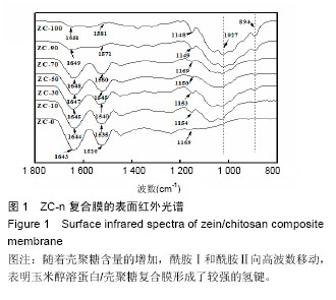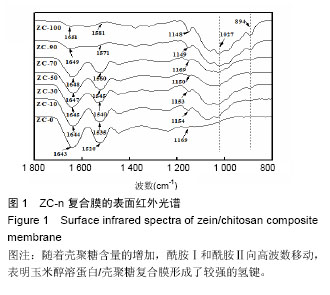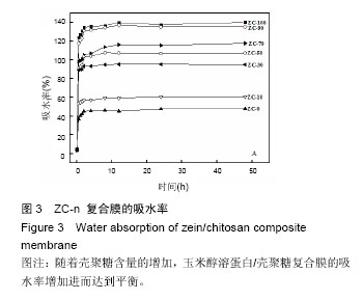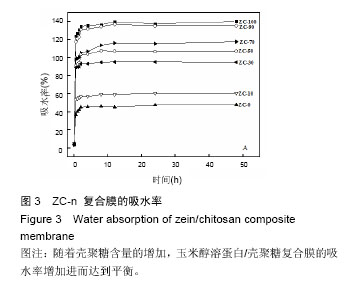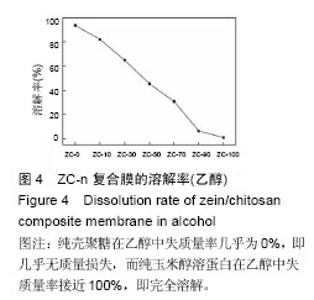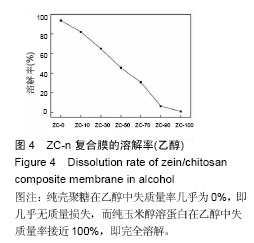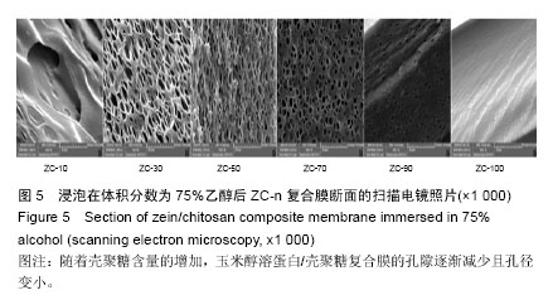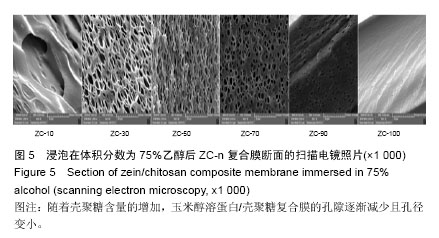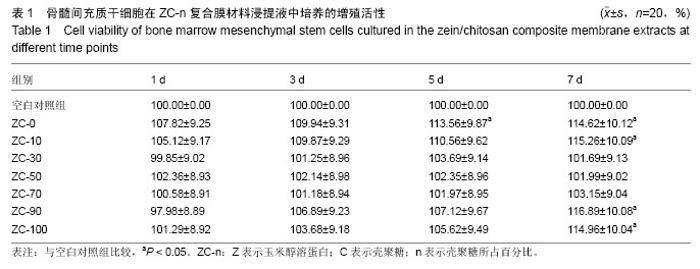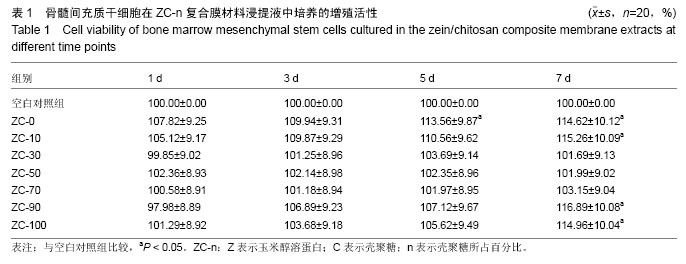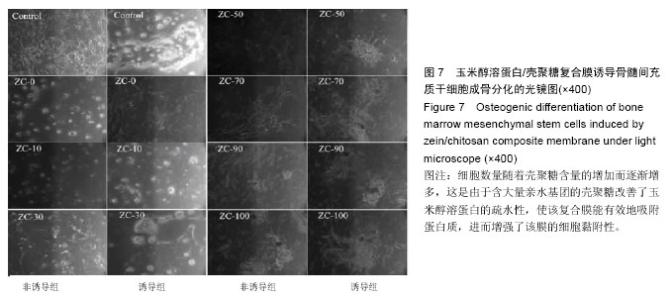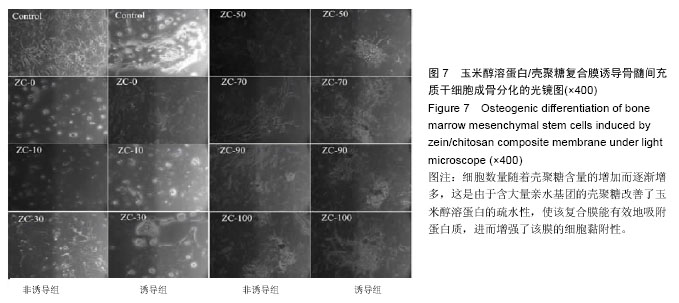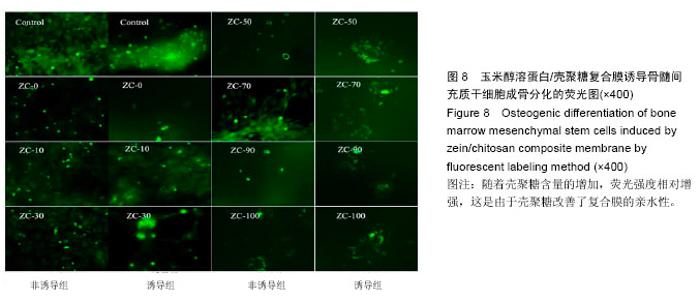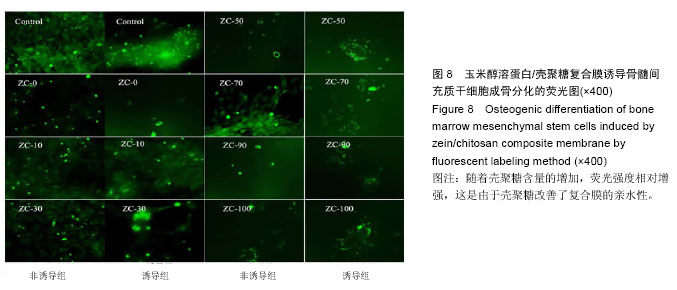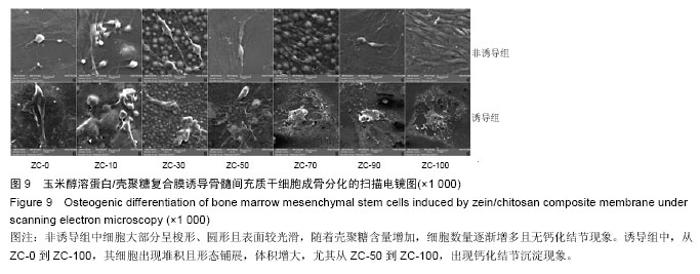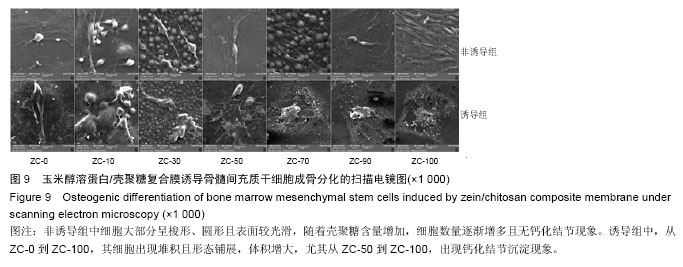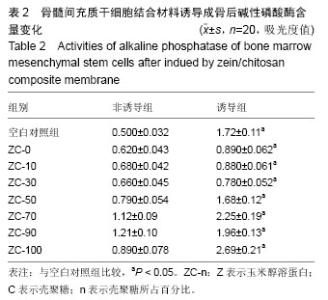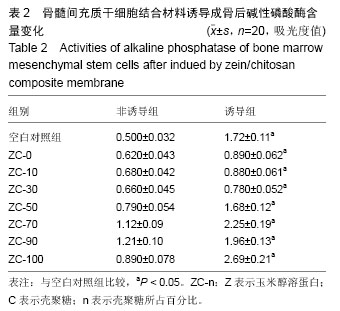Chinese Journal of Tissue Engineering Research ›› 2016, Vol. 20 ›› Issue (21): 3071-3079.doi: 10.3969/j.issn.2095-4344.2016.21.005
Previous Articles Next Articles
Effect of zein/chitosan composite membrane on the osteogenic differentiation of bone marrow mesenchymal stem cells
Li Chun-liang1, Qin Feng2, Li Lin-chang1, Tang Bao-ming1, Li Zhao-wei1
- 1Department of Orthopedics, 2Department of Endocrinology, Affiliated Hospital of Qinghai University, Xining 810000, Qinghai Province, China
-
Received:2016-03-08Online:2016-05-20Published:2016-05-20 -
Contact:Li Zhao-wei, Associate chief physician, Associate professor, Department of Orthopedics, Affiliated Hospital of Qinghai University, Xining 810000, Qinghai Province, China -
About author:Li Chun-liang, Master, Attending physician, Department of Orthopedics, Affiliated Hospital of Qinghai University, Xining 810000, Qinghai Province, China
CLC Number:
Cite this article
Li Chun-liang, Qin Feng, Li Lin-chang, Tang Bao-ming, Li Zhao-wei. Effect of zein/chitosan composite membrane on the osteogenic differentiation of bone marrow mesenchymal stem cells[J]. Chinese Journal of Tissue Engineering Research, 2016, 20(21): 3071-3079.
share this article
| [1] 尹华月,王典,鲁传华,等.高分子材料α-玉米醇溶蛋白(α-Zein)结构研究进展[J].化工新型材料, 2013,41(6):178-180.[2] 刘健,翟文静,吴景景,等.牙龈成纤维细胞-玉米醇溶蛋白-中药双黄补复合体对犬牙周组织再生的实验性研究[J].医学研究生学报,2013,26(9):916-920.[3] 罗钧秋,陈代文,余冰,等.不同蛋白源对生长大鼠骨骼肌蛋白质代谢相关基因表达的影响[J].中国畜牧杂志, 2012, 48(15):37-40.[4] GB/T 16886.5-2003/ISO 10993-5:1999. 医疗器械的生物学评价 第5部分:体外细胞毒性试验[S].北京:中国标准出版社,2004.[5] Zheng ZH, Wei YJ, Wang G, et al. In vitro biocompatibility of three chitosan/polycation composite materials for nerve regeneration. Neural Regeneration Research. 2008;3(8): 837-842.[6] Park SJ, Yu SM, Chun HJ, et al. Effect of Hyaluronic acid on attachment and proliferation of chondrocyte on chitosan/hyaluronic acid bead scaffolds.Tissue Engineering and Regenerative Medicine. 2009; 6(4-11): 438-444.[7] Anderson TJ, Lamsal BP. Zein extraction from corn, corn products, and coproducts and modifications for various applications : a review. Cereal Chemistry. 2011; 88(2): 159-173.[8] Sousa FF, Luzardo-Álvarez A, Blanco-Méndez J, et al. NMR techniques in drug delivery: application to zein protein complexes. Int J Pharm. 2012;439(1-2):41-48.[9] Salerno A, Zeppetelli S, Oliviero M, et al. Microstructure, degradation and in vitro MG63 cells interactions of a new poly(epsilon-caprolactone), zein, and hydroxyapatite composite for bone tissue engineering. Journal of Bioactive and Compatible Polymers.2012; 27(3): 210-226.[10] Torres-Giner S, Ocio MJ, Langaron JM, et al. Novel antimicrobial ultrathin structures of zein/chitosan blends obtained by electrospinning. Carbohydrate Polymers. 2009; 77(2):261-266.[11] Ibl V, Stoger E. The formation, function and fate of protein storage compartments in seeds. Protoplasma. 2012;249(2):379-392.[12] Patel AK, Michaud P, Baynast HD, et al. Preparation of chitosan-based adhesives and assessment of their mechanical properties. Bioresources. 2013; 127(5): 3869-3876.[13] 于音,赵刚,许侃,等.兔骨髓间充质干细胞体外培养向成骨和成脂方向的诱导分化[J].中国组织工程研究与临床康复, 2008,12(8):1449-1452.[14] Balloni S, Calvi EM, Damiani F, et al. Effects of titanium surface roughness on mesenchymal stem cell commitment and differentiation signaling. Int J Oral Maxillofac Implants. 2009;24(4):627-635.[15] Tang M, Chen W, Weir MD, et al. Human embryonic stem cell encapsulation in alginate microbeads in macroporous calcium phosphate cement for bone tissue engineering. Acta Biomater. 2012;8(9): 3436-3445. |
| [1] | Lin Qingfan, Xie Yixin, Chen Wanqing, Ye Zhenzhong, Chen Youfang. Human placenta-derived mesenchymal stem cell conditioned medium can upregulate BeWo cell viability and zonula occludens expression under hypoxia [J]. Chinese Journal of Tissue Engineering Research, 2021, 25(在线): 4970-4975. |
| [2] | Pu Rui, Chen Ziyang, Yuan Lingyan. Characteristics and effects of exosomes from different cell sources in cardioprotection [J]. Chinese Journal of Tissue Engineering Research, 2021, 25(在线): 1-. |
| [3] | Zhang Tongtong, Wang Zhonghua, Wen Jie, Song Yuxin, Liu Lin. Application of three-dimensional printing model in surgical resection and reconstruction of cervical tumor [J]. Chinese Journal of Tissue Engineering Research, 2021, 25(9): 1335-1339. |
| [4] | Hou Jingying, Yu Menglei, Guo Tianzhu, Long Huibao, Wu Hao. Hypoxia preconditioning promotes bone marrow mesenchymal stem cells survival and vascularization through the activation of HIF-1α/MALAT1/VEGFA pathway [J]. Chinese Journal of Tissue Engineering Research, 2021, 25(7): 985-990. |
| [5] | Shi Yangyang, Qin Yingfei, Wu Fuling, He Xiao, Zhang Xuejing. Pretreatment of placental mesenchymal stem cells to prevent bronchiolitis in mice [J]. Chinese Journal of Tissue Engineering Research, 2021, 25(7): 991-995. |
| [6] | Liang Xueqi, Guo Lijiao, Chen Hejie, Wu Jie, Sun Yaqi, Xing Zhikun, Zou Hailiang, Chen Xueling, Wu Xiangwei. Alveolar echinococcosis protoscolices inhibits the differentiation of bone marrow mesenchymal stem cells into fibroblasts [J]. Chinese Journal of Tissue Engineering Research, 2021, 25(7): 996-1001. |
| [7] | Fan Quanbao, Luo Huina, Wang Bingyun, Chen Shengfeng, Cui Lianxu, Jiang Wenkang, Zhao Mingming, Wang Jingjing, Luo Dongzhang, Chen Zhisheng, Bai Yinshan, Liu Canying, Zhang Hui. Biological characteristics of canine adipose-derived mesenchymal stem cells cultured in hypoxia [J]. Chinese Journal of Tissue Engineering Research, 2021, 25(7): 1002-1007. |
| [8] | Geng Yao, Yin Zhiliang, Li Xingping, Xiao Dongqin, Hou Weiguang. Role of hsa-miRNA-223-3p in regulating osteogenic differentiation of human bone marrow mesenchymal stem cells [J]. Chinese Journal of Tissue Engineering Research, 2021, 25(7): 1008-1013. |
| [9] | Lun Zhigang, Jin Jing, Wang Tianyan, Li Aimin. Effect of peroxiredoxin 6 on proliferation and differentiation of bone marrow mesenchymal stem cells into neural lineage in vitro [J]. Chinese Journal of Tissue Engineering Research, 2021, 25(7): 1014-1018. |
| [10] | Zhu Xuefen, Huang Cheng, Ding Jian, Dai Yongping, Liu Yuanbing, Le Lixiang, Wang Liangliang, Yang Jiandong. Mechanism of bone marrow mesenchymal stem cells differentiation into functional neurons induced by glial cell line derived neurotrophic factor [J]. Chinese Journal of Tissue Engineering Research, 2021, 25(7): 1019-1025. |
| [11] | Duan Liyun, Cao Xiaocang. Human placenta mesenchymal stem cells-derived extracellular vesicles regulate collagen deposition in intestinal mucosa of mice with colitis [J]. Chinese Journal of Tissue Engineering Research, 2021, 25(7): 1026-1031. |
| [12] | Pei Lili, Sun Guicai, Wang Di. Salvianolic acid B inhibits oxidative damage of bone marrow mesenchymal stem cells and promotes differentiation into cardiomyocytes [J]. Chinese Journal of Tissue Engineering Research, 2021, 25(7): 1032-1036. |
| [13] | Wang Xianyao, Guan Yalin, Liu Zhongshan. Strategies for improving the therapeutic efficacy of mesenchymal stem cells in the treatment of nonhealing wounds [J]. Chinese Journal of Tissue Engineering Research, 2021, 25(7): 1081-1087. |
| [14] | Wang Shiqi, Zhang Jinsheng. Effects of Chinese medicine on proliferation, differentiation and aging of bone marrow mesenchymal stem cells regulating ischemia-hypoxia microenvironment [J]. Chinese Journal of Tissue Engineering Research, 2021, 25(7): 1129-1134. |
| [15] | Zeng Yanhua, Hao Yanlei. In vitro culture and purification of Schwann cells: a systematic review [J]. Chinese Journal of Tissue Engineering Research, 2021, 25(7): 1135-1141. |
| Viewed | ||||||
|
Full text |
|
|||||
|
Abstract |
|
|||||
